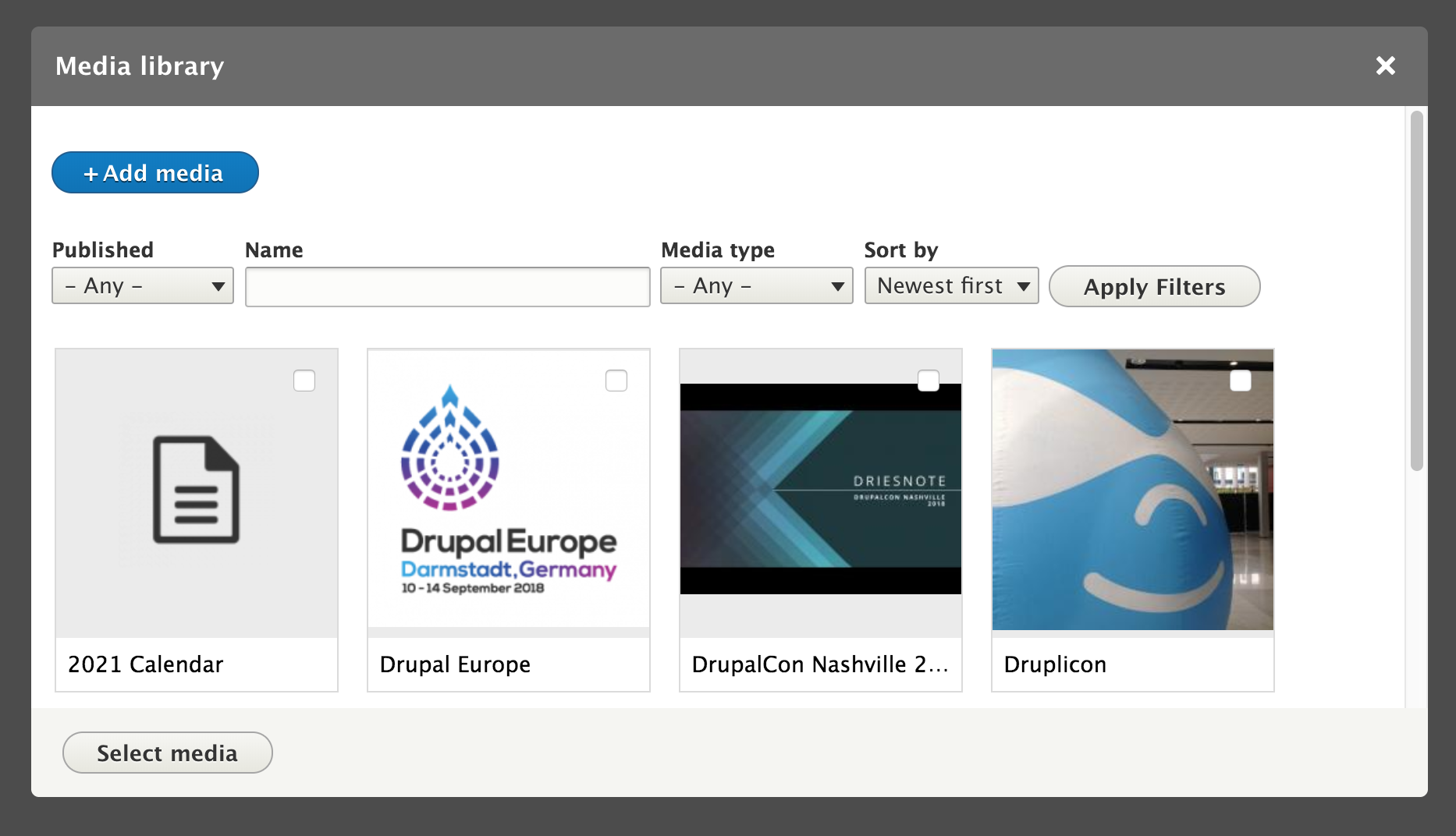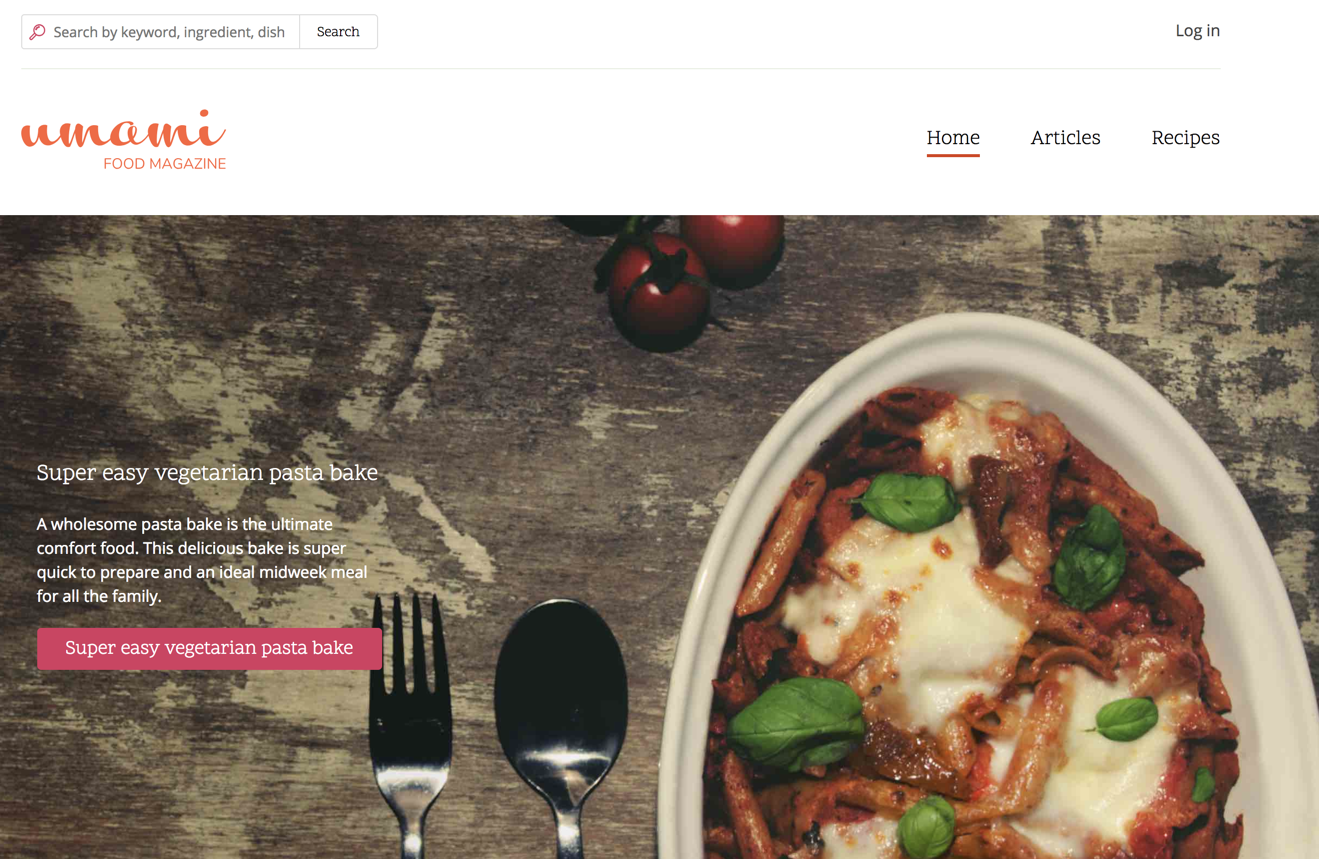Drupal 8.6 was released a couple weeks ago and it’s probably the most exciting release since Drupal 8.0. As you might know, new features are added with each minor release of Drupal 8 (e.g. between 8.5 and 8.6). At first, I thought that this would just change how we test and update our sites. But it’s amazing to see how many new, valuable features are being added in minor versions. These are the features that allow Drupal to constantly evolve and innovate, and keep everyone excited about using Drupal.
Also, minor releases that add features are a great reason to keep your Drupal site up-to-date with the latest minor version!
I tried out Drupal 8.6 the other day and here are some of the highlights. Note that some of these features (Media management, Workspaces) are provided by experimental modules. They are not ready to use in production yet, but are ready to be tested out in development and sandbox environments:
Media
As a Drupal site builder, the media features are a huge step forward. I watch a lot of content editors use Drupal and it’s clear that having media editing work smoothly greatly improves the content editing experience. From the Admin UX research I’ve worked on, better media management is one of the number one things that content editors want.
So, what does media in core provide? You can now add media (images, video, audio, etc) through the WYSIWYG editor and via a new media field. You can re-use media that’s already been added to the site, or upload new items. You can also manage the media via an overview page and add new media items directly without creating content.

Quickstart
Drupal 8.6 comes with a Quickstart command that lets you install Drupal on your machine with a limited number of requirements. This makes it really easy to test out Drupal without installing other software, configuring a VM, or finding a vendor that provides cloud hosting.
I think it’s great to have a feature like this out-of-the-box so that we can have a better experience for newcomers to Drupal. In fact, there’s already updated documentation on Drupal.org about how to install a quick version of Drupal.
Thanks to Matt Grasmick for putting this together!
Out-of-the-box Demo
At DrupalCon Nashville, I tested out the new Umami install profile, which provides a demo of Drupal out-of-the-box. When you install Drupal, you’ll now see the Umami as an option on the install profile step. Umami comes with content, content types, views, and a theme for a recipe website. I think this profile, along with the Quickstart feature will allow developers and site builders new to Drupal to easily test out and demo its features.

Migrate!
Migrate has been around since the first minor release of Drupal 8, it’s the module that allows you to pull content into Drupal 8 from previous versions of Drupal or external sources. Migrate is now a stable module, which means that it will be easier for developers to create custom migrations without worrying about changes to the underlying code. This will also make it easier to write documentation and blog posts about how to do things with Migrate.
There are some features around migrating multilingual content which have been set aside in a separate module (Migrate Drupal Multilingual). This module is an experimental module, as there is still some outstanding work to be done in this area.
Workspaces
You are probably wondering: what is « workspaces »? This is a new, experimental module that allows a site administrator to create a new, parallel version of the site content - e.g. a Staging workspace - that can be deployed to the live site in one go. In Drupal 8.5, content moderation was introduced to Drupal, providing a workflow for content to be drafted, reviewed, and approved by different types of users. Workspaces takes this to the next level, allowing entire sections of content to be staged before publishing.
More Under the Hood
Besides new modules, there have been other improvements made to Drupal under the hood. There have been updates to the experimental Layout Builder module. It is now possible to create blocks via the layout builder interface, which will not show up in the global list of blocks. The process of porting tests from Simpletest to PHPUnit is almost done. Nightwatch.js was added to allow for automated javascript testing.
What’s next?
There are lots of new features planned for Drupal 8.7 including support for JSON API in core, potentially a refresh of the default Drupal admin theme (Seven) and work on features like automatic upgrades. Looking forward to seeing what’s next with Drupal in that release, which will come out early next year. Watch the latest DriesNote here, from Drupal Europe for an overview of the Drupal roadmap and new development in the works.
You can get more information from the blog post on drupal.org and the Drupal 8.6 press release.
Let us know in the comments what’s your favourite part of Drupal 8.6!

